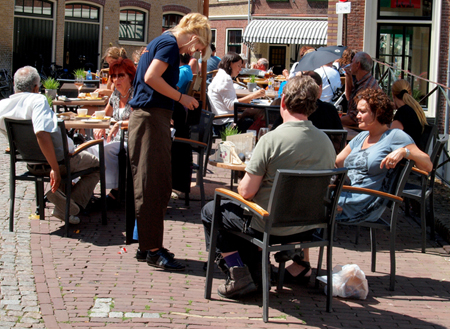| << Chapter < Page | Chapter >> Page > |
Here, we will look at three types of field research: participant observation, ethnography, and the case study.
In 2000, a comic writer named Rodney Rothman wanted an insider’s view of white-collar work. He slipped into the sterile, high-rise offices of a New York “dot com” agency. Every day for two weeks, he pretended to work there. His main purpose was simply to see whether anyone would notice him or challenge his presence. No one did. The receptionist greeted him. The employees smiled and said good morning. Rothman was accepted as part of the team. He even went so far as to claim a desk, inform the receptionist of his whereabouts, and attend a meeting. He published an article about his experience in The New Yorker called “My Fake Job” (2000). Later, he was discredited for allegedly fabricating some details of the story and The New Yorker issued an apology. However, Rothman’s entertaining article still offered fascinating descriptions of the inside workings of a “dot com” company and exemplified the lengths to which a sociologist will go to uncover material.
Rothman had conducted a form of study called participant observation , in which researchers join people and participate in a group’s routine activities for the purpose of observing them within that context. This method lets researchers experience a specific aspect of social life. A researcher might go to great lengths to get a firsthand look into a trend, institution, or behavior. Researchers temporarily put themselves into roles and record their observations. A researcher might work as a waitress in a diner, live as a homeless person for several weeks, or ride along with police officers as they patrol their regular beat. Often, these researchers try to blend in seamlessly with the population they study, and they may not disclose their true identity or purpose if they feel it would compromise the results of their research.

At the beginning of a field study, researchers might have a question: “What really goes on in the kitchen of the most popular diner on campus?” or “What is it like to be homeless?” Participant observation is a useful method if the researcher wants to explore a certain environment from the inside.
Field researchers simply want to observe and learn. In such a setting, the researcher will be alert and open minded to whatever happens, recording all observations accurately. Soon, as patterns emerge, questions will become more specific, observations will lead to hypotheses, and hypotheses will guide the researcher in shaping data into results.
In a study of small towns in the United States conducted by sociological researchers John S. Lynd and Helen Merrell Lynd, the team altered their purpose as they gathered data. They initially planned to focus their study on the role of religion in U.S. towns. As they gathered observations, they realized that the effect of industrialization and urbanization was the more relevant topic of this social group. The Lynds did not change their methods, but they revised their purpose. This shaped the structure of Middletown: A Study in Modern American Culture , their published results (Lynd and Lynd 1959).

Notification Switch
Would you like to follow the 'Introduction to sociology 2e' conversation and receive update notifications?